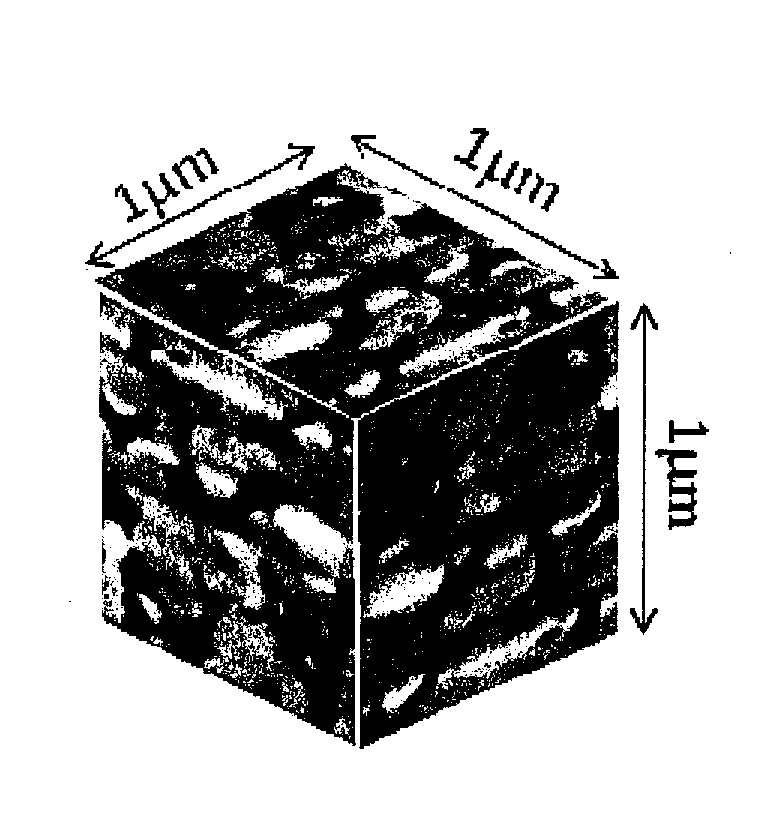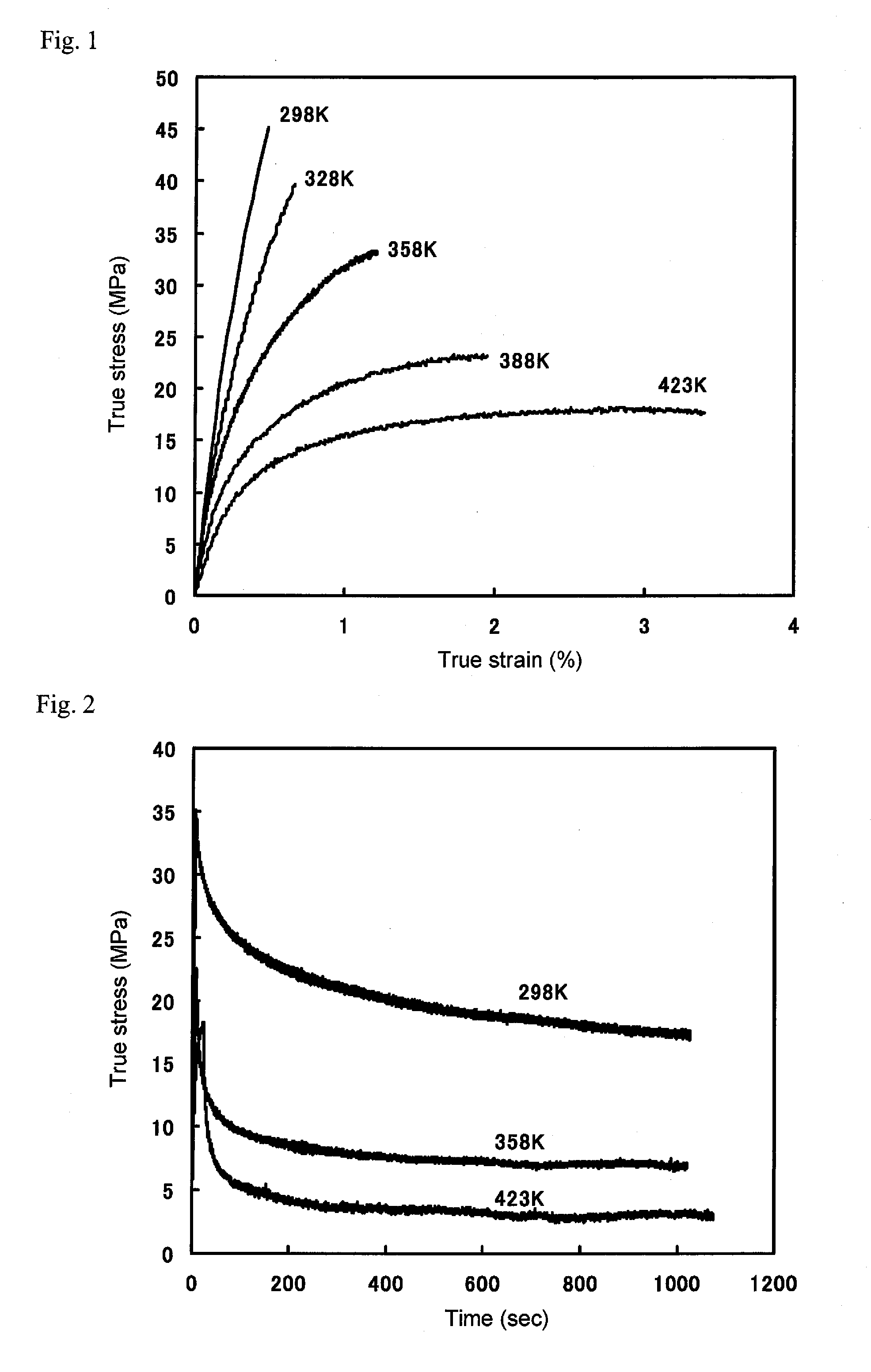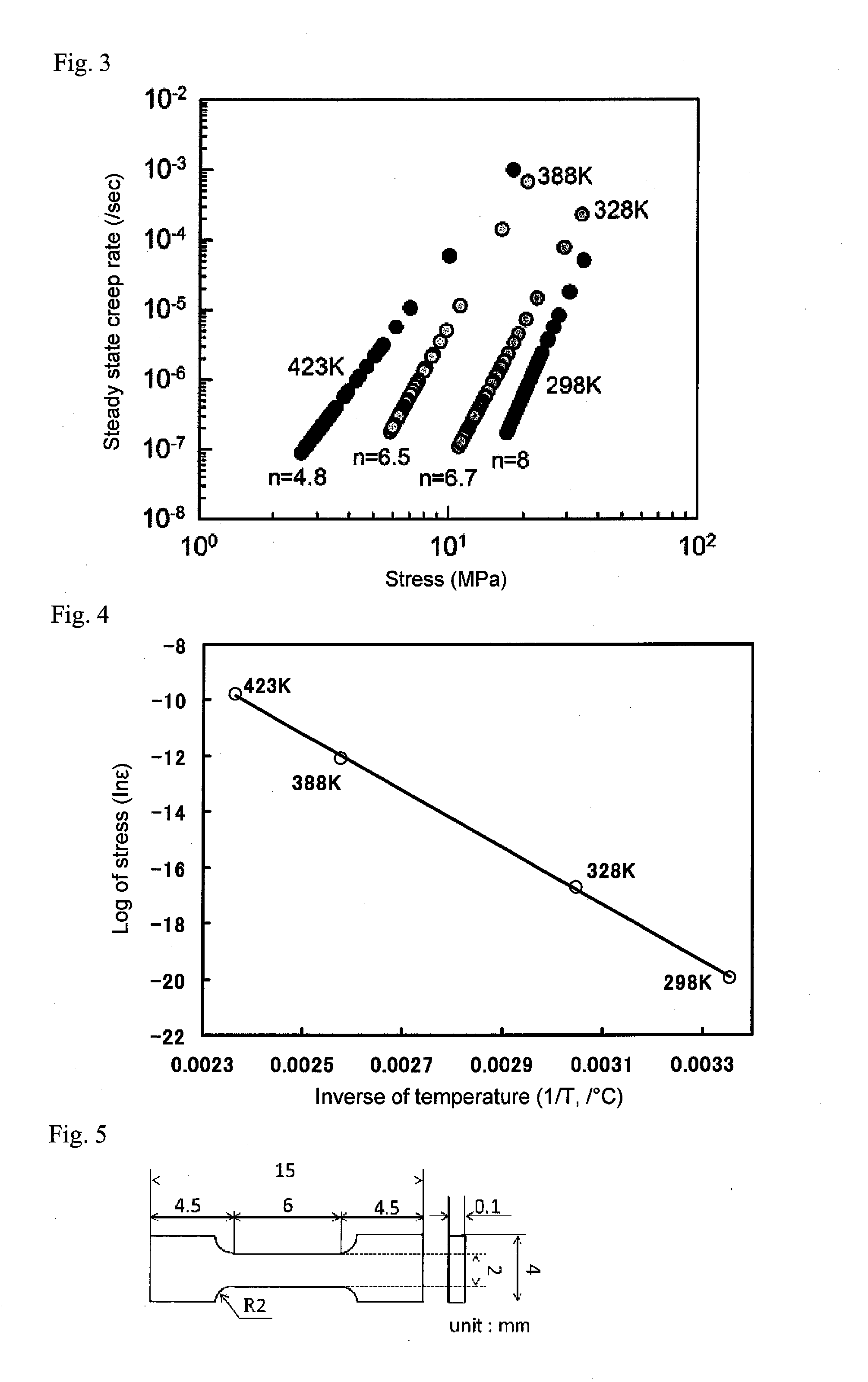Sintered body of silver fine particle
a silver fine particle and body technology, applied in the field of silver fine particle body, can solve the problems of semiconductor device and bonding material, suppress cracks and the like in semiconductor device, and relieve stress on semiconductor devi
- Summary
- Abstract
- Description
- Claims
- Application Information
AI Technical Summary
Benefits of technology
Problems solved by technology
Method used
Image
Examples
examples
[0097]A sintered body of silver fine particles of the present invention is produced experimentally in the following procedure. That is, an electrically conductive paste containing silver fine particles is fabricated firstly, and then the electrically conductive paste is printed on a glass slide for firing.
[0098]A manufacturing method of an electrically conductive paste containing silver fine particles in First to Third Examples and First and Second Comparative Examples is as follows. In a 10 L reaction vessel made of glass, 3.0 kg (30.9 mol) of 3-methoxypropylamine was put. While the reaction temperature was kept at 45° C. or less while stirring, 5.0 kg (30.0 mol) of silver acetate was added. Although it became a transparent solution to be dissolved immediately after the addition, the solution became turbid gradually as the addition progresses, and it became a viscous solution in a greyish brown turbid color when the total amount was added. There, 1.0 kg (21.0 mol) of 95 weight % fo...
fourth embodiment
[0121]Next, a sintered body of silver fine particles in Fourth Embodiment was fabricated similar to First Example other than further mixing an epoxy resin as a curable resin with the electrically conductive paste in First Example for firing. The sintered body of silver fine particles in Fourth Embodiment includes a curable resin. For the epoxy resin, diglycidyl hexahydrophthalate was used. In addition, the amount of adding the epoxy resin was 3.5 parts by weight based on 100 parts by weight of the silver fine particles.
[0122]FIG. 11 illustrates a stress relaxation test result of the sintered body of silver fine particles containing the curable resin in Fourth Embodiment. For comparison, FIG. 11 also illustrates the stress relaxation test result of the sintered body of silver fine particles in First Example. As clear from FIG. 11, in the sintered body of silver fine particles containing the curable resin in Fourth Embodiment, stress relaxation behavior similar to the sintered body of...
PUM
| Property | Measurement | Unit |
|---|---|---|
| temperature | aaaaa | aaaaa |
| particle diameter | aaaaa | aaaaa |
| particle diameter | aaaaa | aaaaa |
Abstract
Description
Claims
Application Information
 Login to View More
Login to View More - R&D
- Intellectual Property
- Life Sciences
- Materials
- Tech Scout
- Unparalleled Data Quality
- Higher Quality Content
- 60% Fewer Hallucinations
Browse by: Latest US Patents, China's latest patents, Technical Efficacy Thesaurus, Application Domain, Technology Topic, Popular Technical Reports.
© 2025 PatSnap. All rights reserved.Legal|Privacy policy|Modern Slavery Act Transparency Statement|Sitemap|About US| Contact US: help@patsnap.com



